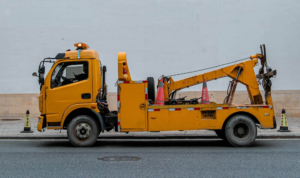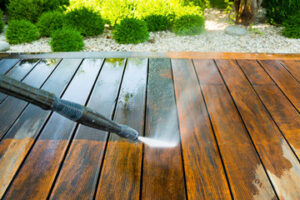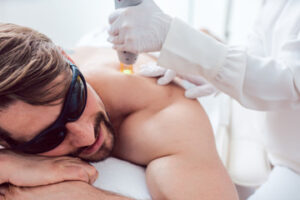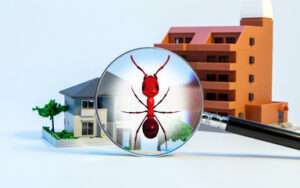Whether your tire goes flat or your car battery dies, Emergency Roadside provides service and support when you need it most. It’s an add-on coverage available through many auto insurance providers.
Remember, it’s important to prioritize your safety when stranded on the side of the road. Pull your vehicle off the road as far as possible and turn on hazard lights to help alert other drivers.

If you’re in a safe location and have the tools you need to change a flat tire, this emergency can usually be handled independently. However, if you don’t have the proper tools or are in an unsafe spot (like the side of a highway), it’s time to call for roadside assistance. These professionals are equipped to handle various tire issues safely and efficiently.
If your tire goes flat while you’re driving, it can be a scary and frustrating situation. Always be sure to drive in a safe place, away from traffic, on the shoulder, or in a parking lot. Also, remember to turn on your hazard lights and use your wheel wedges (if you have them) to prevent your vehicle from rolling.
A flat tire can happen for various reasons, from running over a sharp object to the tires being out of balance. Whatever the cause, it’s important to stay calm and make a plan for getting back on the road as quickly as possible.
One of the quickest ways to get back on the road is using a spare tire. Most vehicles come with a spare tire and the necessary tools in the trunk, so be sure to locate them before you need them.
Another option is to invest in a tire repair kit, such as Fix-a-Flat, which can temporarily seal punctures and reinflate the tire. However, this is a temporary solution and should be followed by professional tire repair or replacement.
Finally, it’s also worth investing in run-flat tires. These tires are designed to allow you to continue driving for a short distance after a puncture, but it’s important to consult with a tire professional to ensure they are compatible with your vehicle and driving needs.
If you’re unable to change your tire yourself or would like the peace of mind that comes with knowing roadside assistance is available, Encore Protection’s on-demand emergency roadside service (coming soon!) can provide you with the help you need. From roadside assistance to tire repairs and replacements, they can handle the many issues that may arise on your next trip.
Dead Battery
A dead battery is a common roadside issue that can happen to anyone. It may seem like a major inconvenience, especially when you have a busy schedule and important things to do. Luckily, you can save yourself the stress of this situation by taking the proper precautions. If you have a set of jumper cables in your vehicle, it is possible to revive a dead battery and get back on the road.
The first thing you should do is turn off the engine of both vehicles. You also want to make sure the gears are in neutral or Park for automatic vehicles. Once you have done this, open the hoods of both cars and locate the batteries. The location of the battery can vary depending on the manufacturer, so it is best to consult your owner’s manual for specific instructions.
Once you have located the batteries, connect the positive (red) cable from the working car to the dead battery’s terminal. Then, connect the negative (black) cable from the dead battery to an unpainted metal spot on the working vehicle, such as a bolt in the engine block. Once the connections are made, start the functioning car and let it run for about a minute. This allows the battery to charge and recharge the dead one.
Afterwards, you can try to start the dead car again. If it still doesn’t start, you may need to contact your roadside assistance company for help.
If you don’t have a set of jumper cables, you can try to find a pair in your garage or toolbox. You can also use a portable drill battery that is plugged in and turned off. Just be careful not to fry yourself or any other electrical components in the process! You can also check to see if your auto insurer offers emergency roadside coverage. If so, Encore Protection’s on-demand emergency roadside service (coming soon!) may be able to help you out. If not, you can always find a local towing service that can provide a quick jump start. Just remember to keep a crisp $5 bill in your glove box to tip the roadside service provider for their help!
Locked Out
Getting locked out of your vehicle is one of the most frustrating and inconvenient roadside situations you can find yourself in. It can happen to anyone, and it’s often caused by simple mistakes or a lack of planning. However, there are several ways to avoid this issue and minimize the inconvenience it can cause. By having a spare key, following safe driving habits, and using technology to your advantage, you can minimize the risk of locking yourself out of your car.
When you are in a lockout situation, it is important to stay calm and assess the surrounding environment. If you are in an unfamiliar or dangerous area, it is best to seek shelter and wait for professional assistance. This will ensure your safety and limit damage to your vehicle. It is also helpful to know who to call if you are stranded and don’t have a spare key. Many vehicle insurance providers offer roadside assistance that may include lockout services.
Some common causes of lockout emergencies include accidentally locking the keys inside, misplacing the key fob, or having a malfunctioning lock. To prevent these problems, make a habit of double-checking your car doors and trunk for the keys before closing them. It is also a good idea to keep a spare key with a trusted friend or neighbor in case you get locked out of your car.
For unavoidable lockout emergencies, it is advisable to contact a professional locksmith or roadside assistance provider. These professionals have specialized tools and experience in dealing with a variety of lock types. Their skills and finesse will enable them to regain access without causing damage to the vehicle. They can also recommend or facilitate towing to a professional service center for a more comprehensive repair. In addition, they can help prevent further damage by addressing the root cause of the problem. They are also available round-the-clock, making them the ideal choice for inconvenient emergency situations. They can provide you with a quick solution and return your life to normal with minimal hassle.
Fuel Delivery
If you run out of gas on the road, it’s important to keep a few things in mind. First, try to coast the vehicle to a safe location on the shoulder. Then, pull over and turn on the hazard lights. Finally, call a roadside assistance service for help. They can send a truck to your location to deliver fuel and get you back on the road.
Before you sign up for a roadside assistance plan, find out what services they offer. Some programs will simply dispatch a provider, while others offer an emergency roadside package with specific coverages for various situations. Look for plans that include flat tire and out-of-fuel repair, battery jumps or replacement, and even towing and labor coverage.
Some states have roadside assistance programs that provide fuel delivery to stranded drivers. For example, Indiana’s Hoosier Helpers and Michigan’s Freeway Courtesy Patrol can deliver fuel and other system fluids to stranded motorists. If your state has a program, consider storing the contact number in your phone. It can save you a lot of time when you need them the most.
When choosing a fuel delivery company, look for one that offers a variety of types of gasoline and diesel. This way, you can be sure that the fuel they bring will be a good fit for your car or truck. It’s also important to find out if they offer a tracking system so you can see the progress of your delivery, as well as insurance in case something goes wrong during the fill-up or transport process.
Finally, find out if they can deliver the type of fuel your vehicle needs to get you back on the road quickly. This is especially important for trucks and other large vehicles that require a specific type of fuel to function properly.
If you aren’t a member of a roadside assistance program, try to get a hold of a friend or family member who can bring a container of fuel to your vehicle. It is also a good idea to carry an emergency kit in your car, including a flashlight, blanket, and non-perishable snacks to help you pass the time while waiting for roadside assistance.








